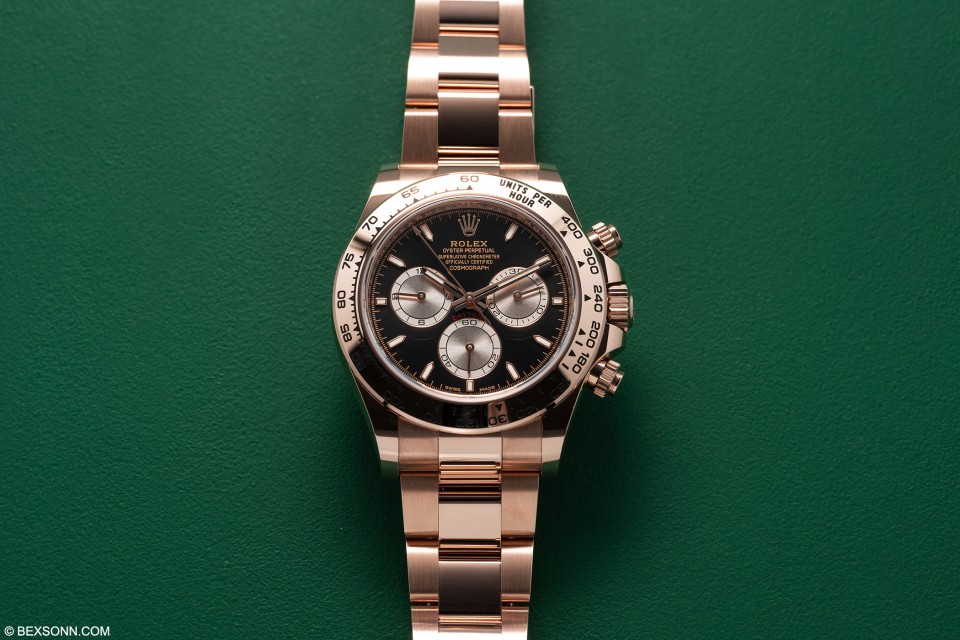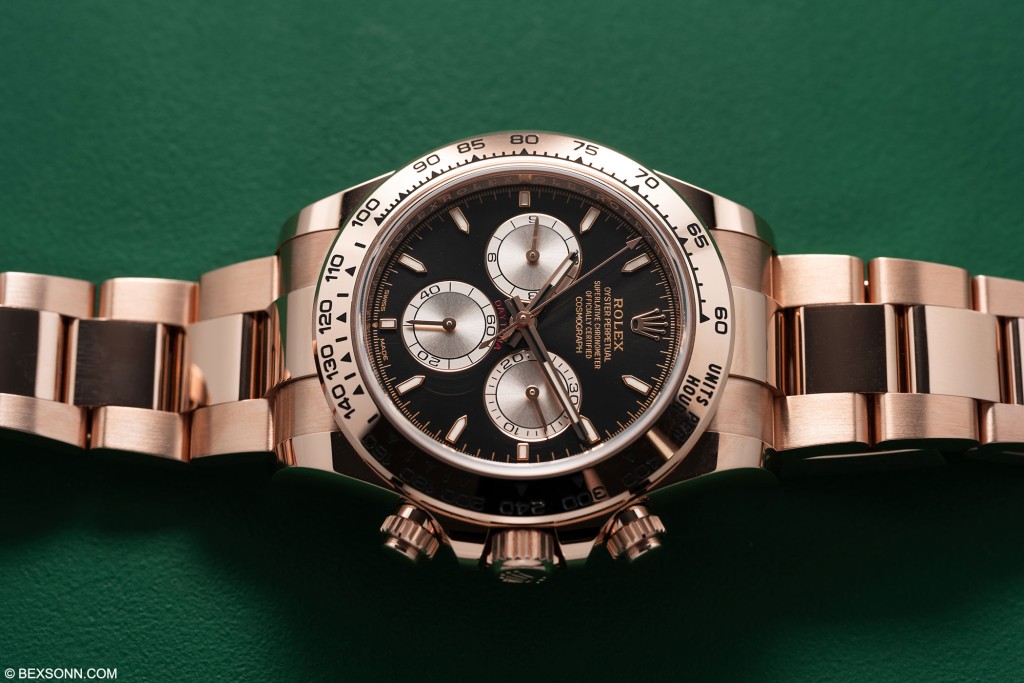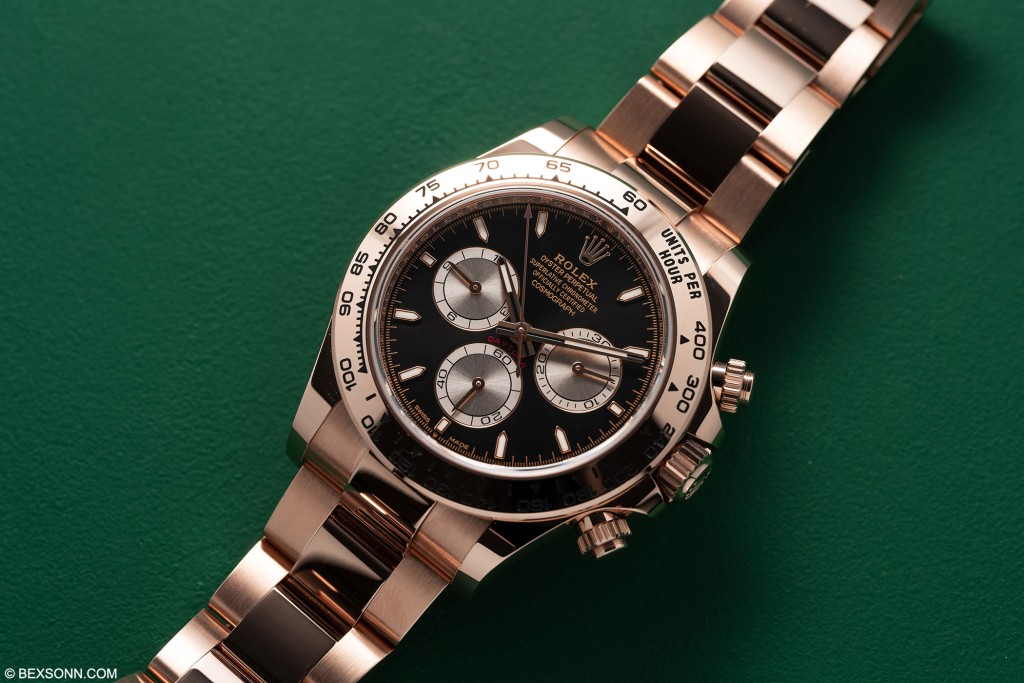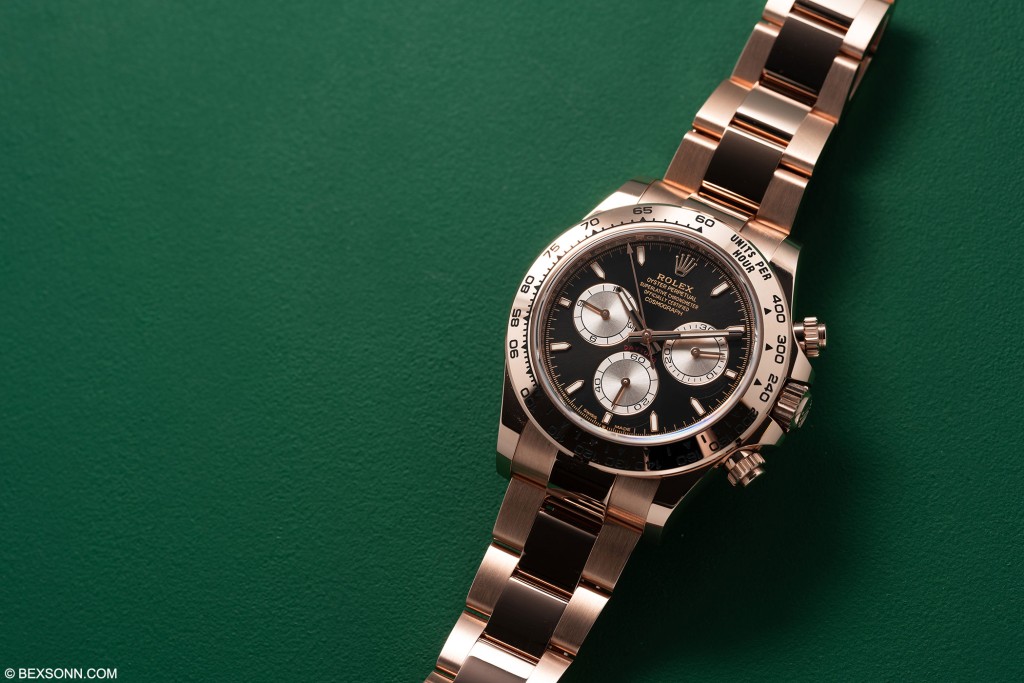Rolex have probably exceeded most collectors and lovers of the brand’s expectations this year with the release of the new Daytona, however, one of the pieces that drew my attention was that of the 18ct Everose Gold Daytona. This is not the only precious metal Dayton released this year but what makes it standout is that it makes use of a combination yet to be seen on a Everose Daytona. This year, during our meeting with the brand that wears the crown, they unveiled three new Daytona models that all sported the Cerachrom bezel, with the except of the Everose gold model.
This new version of Rolex Oyster Perpetual Cosmograph Daytona in Everose gold comes with a matching metal bezel as mentioned and is something that would be nice to see as an option on all new Daytonas in the future but let’s see what happens. It also comes on a matching metal 18ct Everose gold bracelet. That said, the dial is the real winner here on this new 2023 model, as it features a finish we’ve yet to see. While this isn’t something unusual to see on a precious metal Rolex Daytona, it does add a certain, how do you say… that je ne sais quoi!
The Everose gold bezel is graduated to 400 units, which features a recessed tachymetric scale that has been inlaid with black enamel. The case like previous models measure 40mm is diameter, though it does feel a little thicker but in true form features screw down push pieces fashioned out of Everose gold, ensuring Oyster tight waterproofness.
As mentioned, this new Everose gold Daytona features a dial finish and we’ve yet to see on previous versions. The dial is a bright black sunburst affair with register that Rolex are calling “Sun dust”. But why is this different? You see, Everose gold variants that came before this never really featured fully contrasting registers and this is little tweak has pretty much changed the dials appearance. Furthermore, peering at the dial you’ll notice the hour markers have become rather slender and pointed, harking back to a design seen on the “Zenith” Daytonas. The only other minor detail that may go unnoticed is the coronet that is flanked by the text “Swiss Made”. This is there to denote the use of an upgraded movement.
The new-generation Cosmograph Daytona is equipped with calibre 4131, a chronograph movement unveiled this year, entirely developed and manufactured by Rolex. A distillation of technology, this self-winding mechanical movement delivers outstanding performance in terms of precision, power reserve, convenience and reliability. It incorporates a chronograph function with a reduced number of components, thereby also enhancing the movement’s reliability. It is engaged by a robust mechanism with a column wheel and vertical clutch, allowing an instantaneous and extremely precise start. The bridges of calibre 4131 feature a Rolex Côtes de Genève decoration, which differs from the traditional Côtes de Genève by the addition of a slight polished groove between each band.
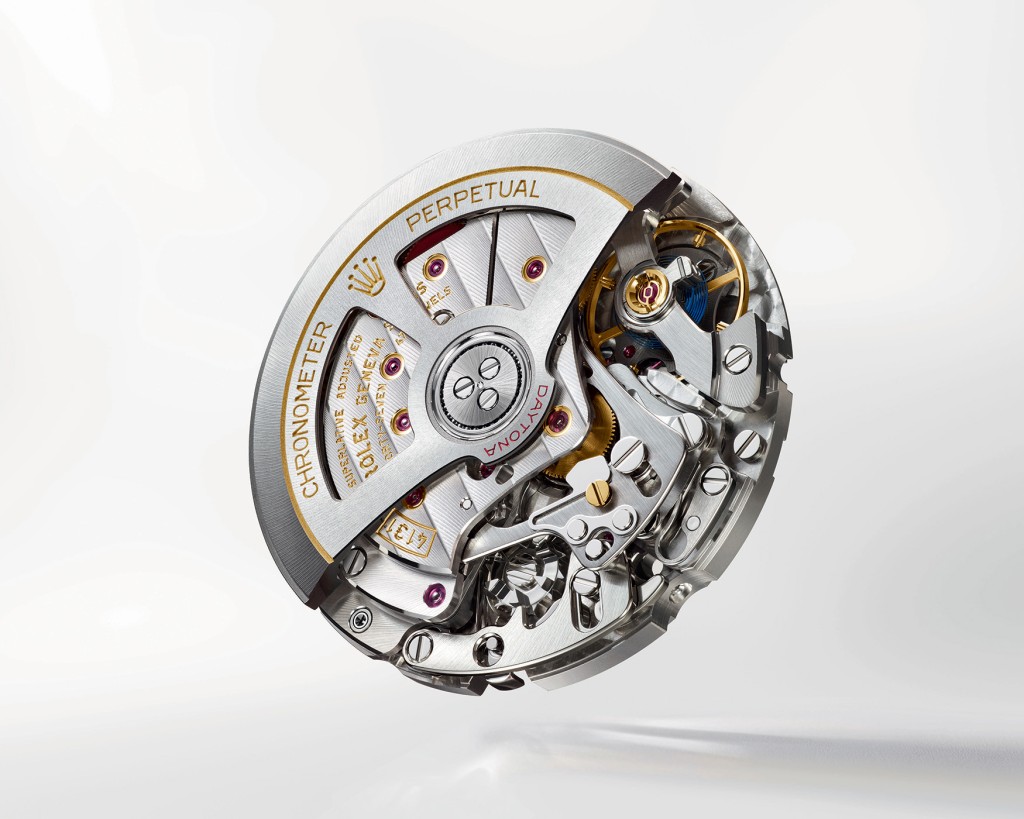
The new calibre 4131 incorporates the patented Chronergy escapement, which combines high energy efficiency with great dependability. Made of nickel-phosphorus, this escapement is resistant to strong magnetic fields. The movement is fitted with a blue Parachrom hairspring, manufactured by Rolex in a paramagnetic alloy. The hairspring offers great stability in the face of temperature variations as well as high resistance to shocks. It is equipped with a Rolex overcoil, ensuring the calibre’s regularity in any position. The oscillator is mounted on the Rolex-designed, patented high-performance Paraflex shock absorbers, increasing the movement’s shock resistance. The oscillating weight is fitted with an optimized ball bearing. The calibre 4131 is equipped with a self-winding system via a Perpetual rotor. Thanks to its barrel architecture and the escapement’s superior efficiency, the power reserve of calibre 4131 extends to approximately 72 hours, making it weekend proof.
The new 18-carat Everose Gold Rolex Cosmograph Daytona 126505 is priced at €42,700, inclusive of VAT. More information is available on rolex.com.
